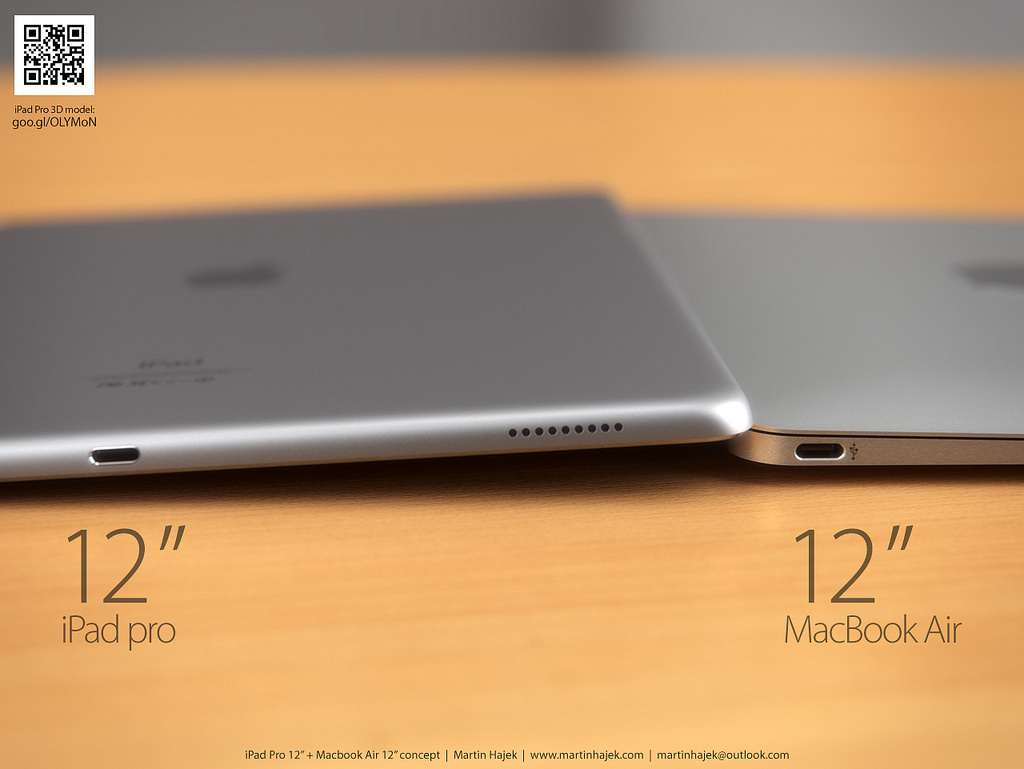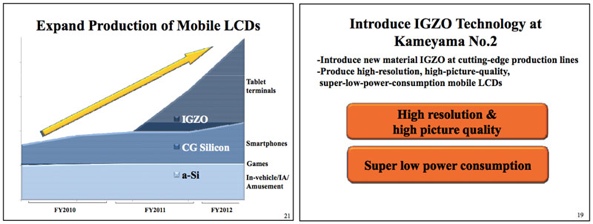Boy, is LG Display on a roll today. Not only has the company’s website inadvertently pre-announced a supposedly upcoming iMac refresh featuring an 8K resolution Retina screen, but a well-informed LG Display related official ostensibly said Apple is also “creating iPads with a 12-inch display,” based on a very power-efficient oxide LCD screen technology, Taiwanese publication ETNews reported Monday.
Oxide LCD, also known as IGZO, requires a fraction of power compared to LCD IPS screens on current iPads, while rendering more vibrant colors and deeper blacks with quick response times and high color saturation.
IGZO is a semiconducting material consisting of indium, gallium, zinc and oxygen that’s been increasingly used for the active layer in thin-film transistors (TFT).
LG Display reportedly plans to increase its production capacity of 9,000 oxide TFT shees per month to 21,000 units, resulting in a total of 30,000 sheets manufactured each month, matching Sharp’s IGZO output.
Because Apple is “creating iPads with a 12.9-inch display,” LG Display is said to expand its production rate by an additional 20,000 sheets in the second quarter of next year.
Apple is said to source IGZO panels for next-gen iPads from LG Display, Sharp and Samsung Display. DigiTimes last month said that Sharp, LG Display and Samsung Display were sending out samples of oxide LCDs to Apple.
Samsung Display currently makes 20,000 IGZO sheets a month, but is aiming to produce 60,000 units per month by the end of 2015.
A few years ago, Sharp established a Gen8 IGZO plant at its Kameyama plant in Japan. LG Display, the world’s largest LCD panel maker, has also selected IGZO backplanes for its large-sized white OLED technology.
At a minimum, IGZO allows for up to twice the resolution of a conventional LCD screen with up to 90 percent power savings. As mentioned before, the benefits of switching from LCD to IGZO panels are many. In addition to improvements in image resolution and sharper images overall with higher color saturation, IGZO panels allow for a more uniform display.
But most importantly, thanks to a vastly reduced power consumption and a much thinner display assembly compared to LCD, IGZO panels would theoretically help the company engineer a thinner iPad with a longer-lasting battery.
For example, even after turning off the power of a device, IGZO allows the image to continue to be displayed on the screen. Another cool feature of IGZO: it only uses extra power when the user actually touches the screen.
https://www.youtube.com/watch?v=zwztl2leNWw
Key advantages of IGZO, according to Sharp:
- Super high-resolution and clarity: IGZO’s transistors are much smaller than traditional LCDs and have significantly higher electron mobility. Therefore, more data can be shown in a single display, creating a stunningly detailed image – up to four times that of conventional full-HD or 1080p LCDs.
- Ultra-low power consumption: IGZO can maintain the onscreen data for a certain period of time without refreshing the data, even when the current is off. This helps cut back the power consumption to achieve longer battery life for displays.
- High performance touch response: Compared to conventional LCDs, IGZO displays have drastically minimized the noise caused during touch input. This allows for quick, easy, more natural-feeling writing and smooth lines.
According to Wikipedia, IGZO-based panels have 20-50x higher electron mobility than amorphous silicon, used in traditional LCDs and e-papers. As a result, IGZO technology can improve the speed, resolution and size of flat-panel displays.
For those looking to learn even more about IGZO technology, consult a white paper here and check out Sharp’s CES 2013 presentation.
Source: ET News via G for Games

